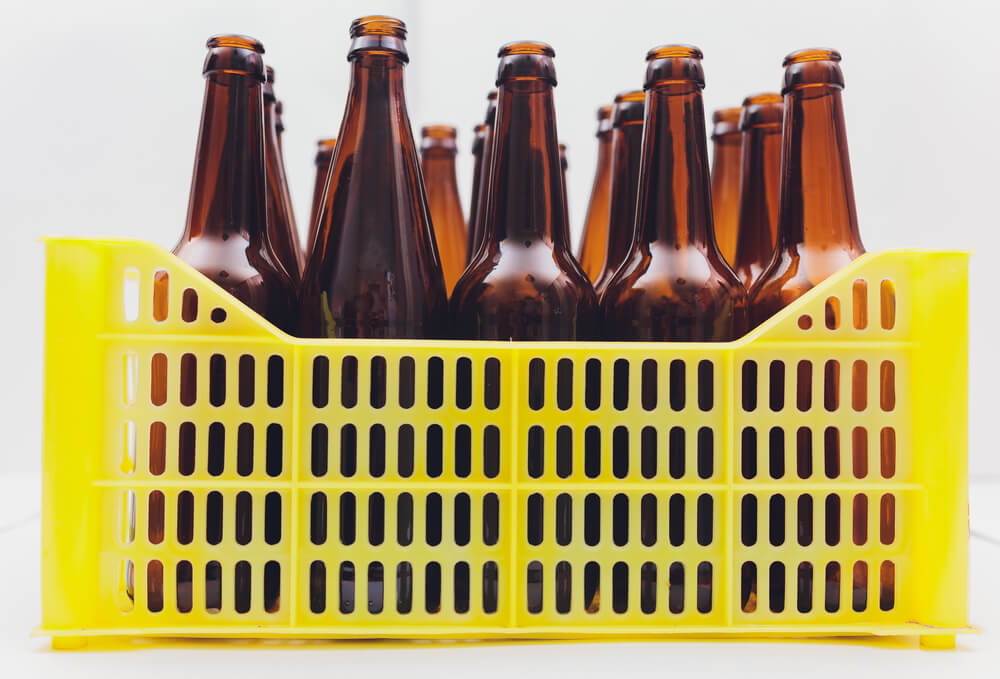Honey is an ingredient not often used in beer, but it can be a great addition to your brew. Here are helpful hints on brewing with honey.
Honey is one of our favorite beer ingredients. Every summer we brew a delightfully fresh and light honey lavender Kölsch. It’s our house standard, and there aren’t many who’ve tried it that haven’t liked it.
Honey has been used for thousands of years in beverages. Of course, the most popular fermented beverage using honey is mead or otherwise known as “honey wine”. Meads are very light and flavorful wines that are also very sweet, thanks to honey.
Perhaps that is why many homebrewers avoid honey in their beer. They are worried that their beer will be too sweet. However, when used correctly and in reasonable volumes, honey can turn a basic beer into a new experience, and that doesn’t mean sweeter.
Why Use Honey for Home Brewing?

Honey is one of nature’s most amazing treats. Unpasteurized honey is made of 95% fermentable sugars in the form of glucose and fructose. It also is filled with minerals, plant compounds, pollen, enzymes, organic acids, and antimicrobial compounds. It is a truly amazing food.
When you add honey to your beer, you add additional simple sugars to your brew. This means more sugar for yeast to ferment. Honey will most assuredly increase the ABV of your beer.
Surprisingly however, the resulting beer will also be light in body but not sweet and depending on when you add honey to the brew, will have floral aromas and a delicate honey flavor.
If you would like to learn more about using honey in beer the National Honey Board has a great whitepaper on brewing with honey. The National Honey Board website also has great resources to help you brew with honey.
Types of Honey for Home Brewing
We think it is important to be selective with the type of honey you use in your brew. Honey from your local grocery store is only honey by name. It has been filtered and ultra-pasteurized, so all of the good stuff is gone. If this is your only source for honey, it will work, but it’s not as good as the alternative.
We always use raw honey in our brew. Raw honey has all of the good stuff left in it. We like to shop local and support local farmers so we buy our raw honey at our local farmers market in the summer, but many local beekeepers will sell year-round via the internet. We’ve also had some luck finding raw honey at our local health food store, but it’s usually really expensive.
Honey isn’t all the same. Depending on the flowers that the bees visited, honey can have different flavors and different color profiles. There are over 300 kinds of honey in the United States, here are some common ones you can find relatively easily.
- Alfalfa – Found in the western US alfalfa honey will bring notes of vanilla and grass. It’s a mild honey and is a good complement to most beer styles.
- Clover – This is the most common type of honey. It is light and floral. It goes well with light beers and lagers.
- Orange blossom – Or any light fruit or herb honeys (raspberry, apple or sage for example) will bring a delicate fruit note to your beer. They are good in light lagers, pale ales or spiced ales.
- Dark Berries – Think blueberry and blackberry. These honeys are darker in color and more robust in their flavors. They are ideal in pale ales, stouts and fruit beers.
- Buckwheat – Buckwheat honey is produced in the Northern United States and is less sweet than other honeys. It is very dark and very heavy, almost like molasses. Use it sparingly and only in heavy beers like stouts and porters.
When to Add Honey to Homebrew
There are a few points during the boil that you can add honey, depending on how you want the honey to show in your beer. Keep in mind, honey increases your original gravity, so you’ll need to monitor your fermentation closely to ensure that you get complete fermentation of the additional sugars.
- Boil – If you add honey to the boil, do so at the midpoint of the boil. This will pasteurize the honey, and if you’re just looking to increase your fermentable sugars, this is the best time. Most of the honey flavors and aromas will boil off.
- Flameout – If you want to keep some of the honey flavors but are concerned about wild yeasts in your fermentation, flame out is the right time for your brew. You’ll keep the flavors of the honey but have the added benefit of some flash pasteurization.
- Primary Fermentation – After you transfer your beer to the primary fermenter, add diluted honey to the fermenter. Make sure it’s not too warm or you’ll shock your yeast. At this stage you’ll get even more of the honey flavors and aromas in your beer.
- High Krausen – Most brewers looking to have both the added sugars and maximum flavor add honey at high Krausen. This is the point of maximum yeast productivity and adding at this point ensures that your yeast won’t be exhausted before consuming most of the sugars.
- Secondary – If you want the most honey flavor possible in your final beer this is the time to add honey.
- Priming – Honey can be used as an alternative to priming sugars but its not as reliable as regular priming sugar. Add diluted honey to the bottom of your bottling bucket and rack the beer on top for better mixing.



